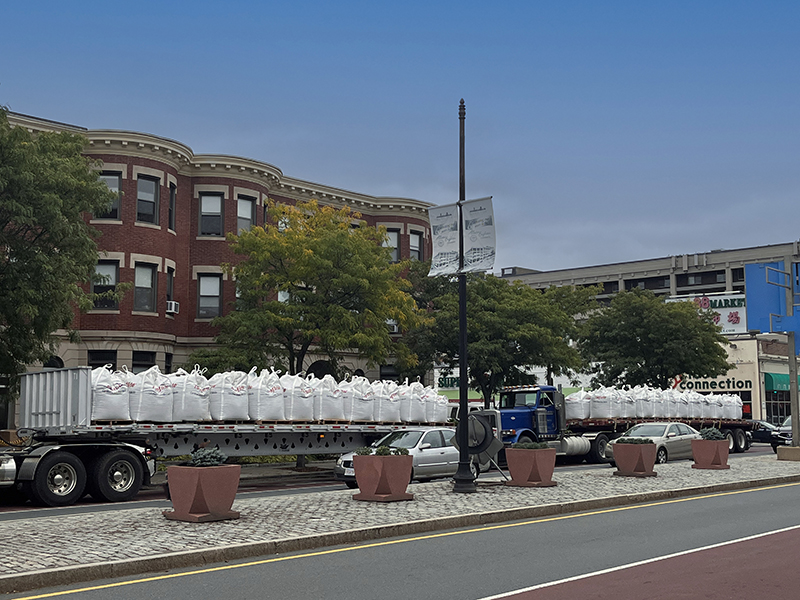
RCS’ products crucial to unique new Boston skyscraper at BU

Boston, MA When the ribbon was cut to celebrate the opening of Boston University’s new Center for Computing & Data Sciences last month, it fell away onto a crucial but often overlooked element of the ambitious project: The engineered soils used throughout the site and even on the roof.
The architecture, by KPMB Architects of Toronto, is said to look like a stack of books. Not as noticeable from street level is that the “books” form eight outdoor terraces, each with its own green roof surface, designed to minimize the heat island effect.
According to Christopher Ierardi, general manager of Read Custom Soils (RCS), that component of the project required nearly 400 cubic yards of lightweight roof soils, including 70 yards of drainage media and 300 yards of planting medium. All the proprietary Roof
-lite products were delivered by RCS in Supersacks to facilitate lifting onto the roof surfaces.
“Green roofs are well known for their environmental benefits, but in this case, they are integrated into the essence of the architecture,” Ierardi said. “The plants and grassy areas provide a sharp contrast to the glass and exposed steel that dominate the visual appeal of the building.”
BrightView Landscape Design was the installation contractor for all soils on the project, and the proprietary Rooflite product was provided under license with Skyland USA.
Columbia Green Technologies utilized Rooflite’s Intensive Growing Media within their vegetated roofing assembly because it is regionally blended and formulated to meet the rigorous standards of guidelines for particle size gradation, fines content, dry and saturated bulk density, total porosity, air filled porosity, water retention, hydraulic conductivity, pH balance, soluble salt content and organic matter content. Additionally, the media utilized provides water, air, nutrients, and support to plants.
An important aspect of growing media is that it helps manage stormwater by retaining the water and slowing stormwater run-off. This was especially important given the proximity of the Charles River dam.
Vanessa Keitges, CEO of Columbia Green Technologies said, “Universities are our billboards for sustainable design and an important tool when educating the next generation how to incorporate nature in a built environment. This is why we use only the highest quality of products within our vegetated system, and this is especially important when it comes to what growing media we use.”
Engineered soils were used throughout the ground-level landscaping for the project s well. In all, RCS delivered some 2,800 cubic yards of materials for planting beds, bioretention, and structural soils, Ierardi said. These materials will assure the health of the plantings around the building and reduce maintenance costs.
“This project is an excellent example of how engineered soils can lead to the success of an urban landscaping project,” Ierardi said.